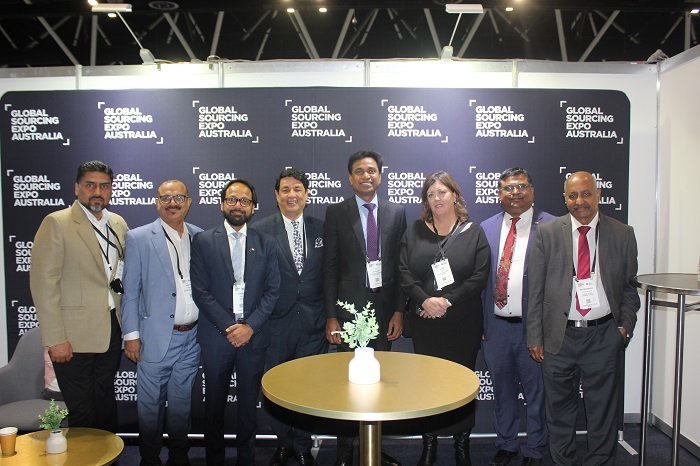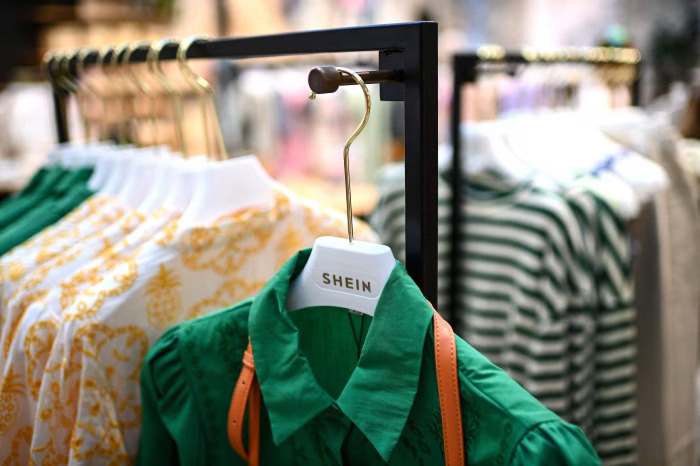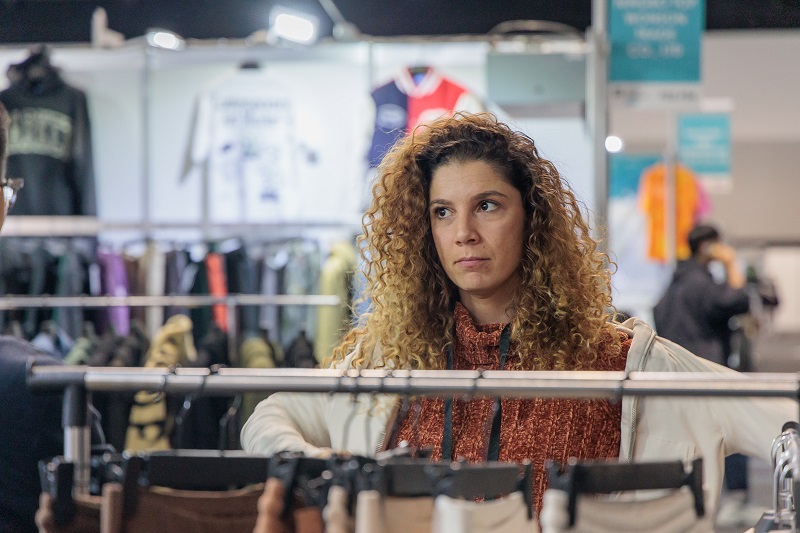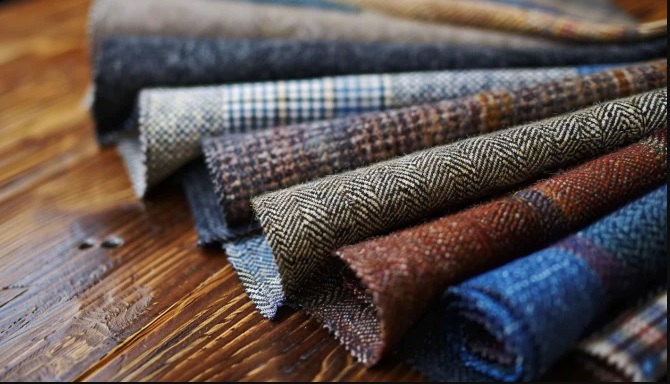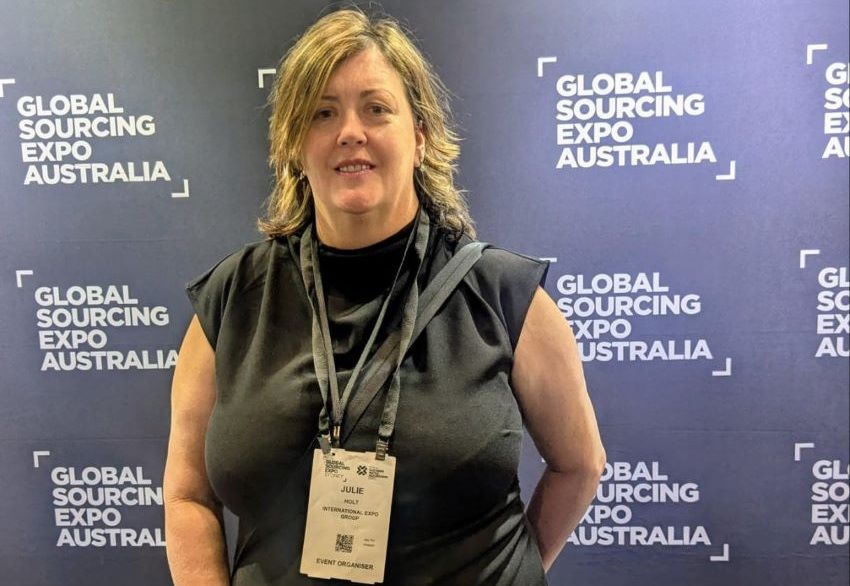FW
Garment manufacturers in Aba, the commercial centre of Abia state, Nigeria, are seeking support from government agencies to produce seamless products that would withstand competition in international markets. Manufacturers have specially appealed to the Bank of Industry (BoI) and the Nigerian Export, Import Bank (NEXIM), for this purpose.
Manufacturers have urged the Central Bank of Nigeria (CBN) to use part of the N220 billion small and medium enterprises fund, to acquire modern equipment needed in the industry, which would help in finishing of their products. They feel that the garment makers in Aba have the capacity to manufacture for local and export, with the right facilities and equipment.
The President of Association of Tailors and Fashion Designers (ATFAD), Onyebuchi Nwaigwe, says if sector operators are properly empowered, then good quality products would be produced, and this would help create jobs and contribute to the country’s GDP. Besides, he urged the Abia State Government to fulfill its promise of developing the industrial cluster at Umukalika in Obingwa Local Government Area. This would create a more conducive environment for the leather and garment sectors of the country. Aba has one of the largest concentrations of micro, small and medium enterprises (MSMEs) and a huge number is engaged in leather works, steel fabrication and garment making. Estimates state that Aba has 110,000 shoemakers and 50,000 garment makers.
The region’s artisans’ ingenuity grabbed the attention of the United Nations Industrial Development Organisation (UNIDO) to collaborate with the Federal Government, to set up a Common Facility Centre (CFC) in the city, which would support the clusters to further develop their skills.
Bangladesh is setting up its first polyester staple fiber plant. This is expected to cater to 40 per cent of the country’s annual demand. The plant is an initiative to make the country self-sufficient in polyester staple fiber. This fiber is a key raw material for spinning mills.
The plant will come up on 30 acres of land and be a backward linkage for the garment sector. It will directly employ 2,000 and indirectly another 6,000 people. Once the factory is up and running it will produce 400 tons of polyester staple fiber a day. Raw materials for the plant will be imported from Arabia, India, Indonesia and China. Fabrics from polyester yarn are used extensively in apparel and home furnishings--- shirts, pants, jackets, hats, bed sheets, blankets, upholstery, furniture, and so on.
This move may inspire many other companies to set up polyester staple fiber factories in Bangladesh. Demand for the product is increasing by 12 to 15 per cent on a year-on-year basis. Polyester staple fiber is a fiber produced from synthetic chemical compounds and is strong enough to be twisted into yarn similar to natural fibers such as cotton or wool. It’s a substitute for raw cotton.
With the constant decline in merchandise exports since last December, the government aims to announce a package to boost shipments. Commerce and Industry Minister Nirmala Sitharaman indicated this while speaking at a recent convention. She said that the package would include extension of existing interest subvention scheme to many more sectors.
“The finance ministry has given us an outlay for interest subvention. We (commerce ministry) have laid out rules by which different sectors would be given this benefit. These will soon go the Cabinet for a decision,” Sitharaman said. Under the scheme banks provide three per cent interest relief on export credit and get compensated for the same.
The minister further added that the government will look into the ‘Merchandise Export for India Scheme’ for rewarding export performance, at the time of a mid-term review of the Foreign Trade Policy 2015-20, which will be held in the months of September/October 2017. Responding to the discussion on foreign investment in B2C e-commerce, she said that some states are yet to revert with their responses on the issue. However, she added that the government was not considering allowing foreign investment in multi-brand retail, neither had it received any applications from companies in this regard.
In Budget FY16, the FM had announced Rs 1,650 crores for interest subvention scheme for exporters. This amount is expected to be increased significantly. The rate of export credit in India is 11 to 12 per cent compared with 5.5 per cent in China, 6.2 per cent in Malaysia, 4.6 per cent in Thailand, 2.6 per cent in Taiwan and 2 to 3 per cent in the euro area except Greece. Talking about the delay in FTA talks with EU, she said that India is awaiting a response from the EU on why they chose to act against the country’s pharmaceutical sector, which is world-renowned as suppliers of authentic but cheaper generic medicines.
India Trend Fair will be held in Japan from October 27 to 29. It is an attempt to promote Indian textile products. The event is being organised by the Tirupur Exporters’ Association with the support of Indian embassy in Japan, the Japanese government and various trade bodies in Japan and India.
Textile exporters from clusters like Panipat, Karur, Jaipur, Mumbai and Delhi have been roped in for the event. Japan imports 90 per cent of its apparels from China and only three per cent from India. India wants to have at least 65 per cent share. The event will exhibit woven and knitted garments, home furnishing and handicrafts, sportswear, cushion covers, floor mats, decorative articles, bags, shoes, jewelry and fashion accessories.
The scope of the fair has gone beyond textiles and materials to encompass a fusion of new fashion and cultures. It’s aimed at helping India enter the Japanese mindset and fuel the Japanese people’s interest in India, which will also help tourism grow. Buyers would include manufacturers, wholesalers, trading companies, importers, select and specialist shops, department stores, volume and online retailers.
In July, there was a rebound of 100 per cent man-made fibre yarns' exports from India, especially polyester and viscose. A total 6.09 million kg of man-made spun yarn was exported. Out of this, 1.23 million kg was acrylic yarn, 2.19 million kg was viscose yarn, and 2.63 million kg was polyester yarn. July’s, viscose yarn export jumped 27 per cent, while value of polyester yarn went up 13 per cent. However, after a substantial pick up in June, acrylic yarn export dipped by 8.5 per cent. Unit price realisation was dipped US cents 11 for polyester from a year ago and viscose yarn dipped by 5 per cent.
polyester spun yarns were exported to 46 countries, reaching an aggregate $6.2 million, with a unit price realisation averaging $2.37 a kg. Totally, 2.6 million kg was exported, of which, 21 per cent was shipped to the US alone. Nearly, 16 new destinations were added for exports of polyester yarn of which, Nigeria, Dominican Republic and Colombia were the major markets.
Viscose yarn export was valued at $5.5 million or Rs 35 crores and the volume was at 1.83 million kg. This implies average unit price realisation of $3.04 per kg, which is US cents 13 higher than realised in May and US cents 15 lesser than a year ago. Viscose was exported to29 countries and Belgium was the single largest importer, worth $1.25 million. Besides, the US, Portugal, and Bangladesh were the fastest growing markets for viscose yarns, and Pakistan, Brazil and Guatemala were the new major markets in July this year.
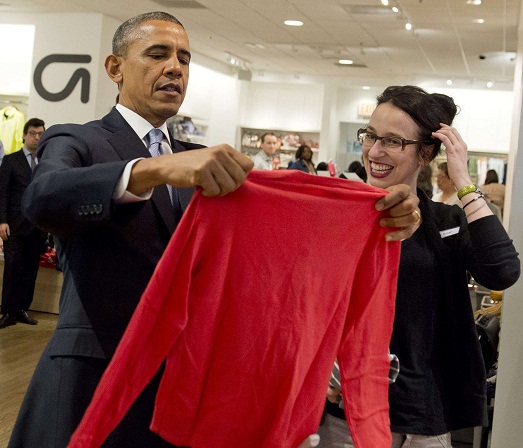
Though New York is considered a major shopping destination with variety and prices that attract tourists and locals, top brands such as J.Crew, GAP, Abercrombie & Fitch are losing customers. Young customers say that they are not happy with the fabric of the garment at GAP as it starts looking old after just one wash. Many others feel GAP is generic and that they do not identify with the label.
Changing face of shopping

‘Millenials’ or the young shoppers of today (younger than 35) shop differently. They tend to value good prices rather than logos and status. Apparently, they would be generating 40 per cent of retail spending by the year 2020. Herbert Kleinberger, an adjunct professor at New York University and a longstanding retail industry consultant believes teens are not shopping for clothes in malls anymore the way they used to and they use their disposable income to buy a lot of other things, such as entertainment and electronics.
Besides, the digital revolution moved shopping activity online, and simultaneously diminished the importance of malls as social meeting points for youth. Now, the younger generation spends time on other activities and stays connected through their mobiles.
The result, brands are facing the brunt with sales dipping. Recently, California-based GAP announced it would close about a quarter of its almost 700 locations in the US. J.Crew’s drop in sales resulted in cancellation of its planned IPO last year. The company has $1.5 billion of debt in its books. Simultaneously, though, competitors from other countries gained popularity in the US, for example, Japanese brand Uniqlo. The competition is not only fast, but also cheap.
Today, customers want to be different, they want to be individuals. Kleinberger feels now, in the US people don’t wear things that identify them through the brand as much. Uniglo opening of its flagship store on New York's Fifth Avenue, generated a hype almost as big as when Apple releases a new product.
Quick turnaround, a plus
Spanish fast fashion brand Zara, Swedish chain H&M are expanding in the US. The advantage of the so-called ‘fast fashion’ brands is their speed. Spanish apparel giant Inditex that includes brands such as Zara, Bershka and others, was founded as a single store in Spain in 1975. It had revenues of €12 billion and over 2,000 stores by 2014.
Foreign competitors are twice as fast compared to legacy brands such as J. Crew and GAP that take nine months to get their products to the market. The overseas brands simply copy new trends from fashion shows worldwide within a few days. Also, in the case of Zara, US stores are in contact with its headquarters in Spain on a daily basis.
Experts say, they take all information coming in every night and are constantly creating small new lines that they ship into their stores. At times, this happens every two weeks. Now these lines are small enough and allow the company to quickly get rid of garments that are not selling.
The US retail market, looks like, it is going through a complete overhaul as many foreign chains are growing and grabbing the market.
After Zimbabwe controversially deposed former white commercial farmers off their land and on the back of frigid relations with the western world, the country declared its ‘Look East Policy’ in 2003. The Zimbabwe government shifted its economic relations from the West to the East facing an embargo from the US by way of Zimbabwe Democracy and Economic Recovery Act (ZIDERA) of 2001 and European Union (EU) article 96 of 2002. This lead to disastrous consequences and the textile industry suffered the most from this policy.
Before the ‘Look East Policy’, Zimbabwe had a big and thriving textile industry, which at its peak used to employ over 24,000 employees. With the policy, many Chinese textile players would trade all kinds of textile materials. The Far East nations and China have advanced production methods and can afford to offer their products at better prices. Therefore, local textile companies started to face challenges. For example, where a locally made face towel would be sold at $5 in Zimbabwe, Chinese dealers would sell the same at $1. The downward spiral soon started affecting an estimated 20,000 employees (83 per cent of the workforce) employed by textile firms lost their jobs in the twelve years that this policy has been in place. Production capacity utilisation, for these players has dipped below 10 per cent.
The downside of the policy spread to Cotton Production Industry too. The final straw was when the Cotton Company of Zimbabwe (COTTCO) applied for Judicial Management in November last year citing increasing debt burden, poor capacity utilisation and other viability challenges.
Bangladesh’s denim industry has taken to eco-friendly ways. They are taking measures to produce sustainable denim, applying methods and means to conserve energy and natural resources. The green system will help cut use of water by 92 per cent and energy by 30 per cent to produce a pair of jeans compared to conventional methods, according to textile experts. As per the new system, less chemicals are used, it helps avoid wastage of water, reduces carbon emission, and encourages use of recyclable raw materials. Moreover, cotton waste is reduced by up to 87 percent, thus easing emissions of carbon dioxide and other greenhouse gases generated through the burning of cotton.
In traditional methods, production of 60 degree heat is required and in sustainable method it can be done with 40 degree, says Shahidul Hasan, Director of Amber De. Also, Use of less water and chemicals will ultimately protect the environment. Chemicals and technology, which consumes less water and electricity to generate steams is being used now.
Mustafiz Uddin, Managing Director, Denim Expert, says environmental cause was becoming a major issue in the world. Thus, buyers are getting more attracted to green products and are ready to pay higher for products manufactured in an eco-friendly manner. Also, the Denim Expo to be held in November this year would be broadly discussing the newly introduced term ‘sustainable denim’ to encourage industry people to go on with the system.
Cambodia's workers unions are demanding higher wages, which, according to the country’s Garment Manufacturers Association (GMAC) is creating problems for the industry and may lead to a decline in buyers, factories and jobs. US companies are potential buyers, led by the American Chamber of Commerce. GMAC said that Walmart, Target, and New Balance, recently visited the country, where they raised concerns about labour’s demands to form unions easily under a new law currently being drafted. Labour leaders, meanwhile said that they would continue demanding higher wages as workers struggle to earn a livelihood under the current $128 per month minimum wage. They would also continue to demand changes to the union law, they added. Ken Loo, GMAC’s secretary-general, though says the law will create ‘chaos’ if it is drafted according to unions’ demands.
However, unions have fought to prevent the drafting of a law written to help factories, and it has been changed in parts after several meetings with the Ministry of Labour. For example, a provision barring union leaders with criminal records has been struck down. Also, now, 10 workers in a factory must support a union for its formation rather than 25 per cent of workers. Besides, the mandatory age for union membership has been lowered to 18 from 25. However, unions must still file financial reports for their members, and send a copy to the Ministry of Labour.
Loo, while talking about the consequences of the unions’ demands told VOA Khmer that their demands for higher wages may ultimately drive factories away, which means good’s price would increase and they could go to other countries that are cheaper than Cambodia.
At Pakistan's cotton market, buyers have started building their inventories to keep their mills running till the end of this month. A bullish sentiment has been building up in the local market even though the general condition of cotton on the international market is lackluster and local yarn prices are sluggish.
In Karachi, there was increased demand for cotton because both mills and exporters were buyers. It is foreseen that domestic cotton prices will remain firm till the end of this month. Thereafter, demand and supply phenomenon is likely to guide the market. Due to reported increase in the number of ginning factories, ginners are competing for the purchase of seed cotton.
An apparent shortage of seed cotton is resulting in the rise of domestic prices. However, a better visualisation of the current crop size will be available by the end of this month. The Karachi Cotton Association feels the most efficient way to compensate growers facing adverse conditions is by providing direct subsidy on the basis of acreage sown, as is practiced in other countries. This would not only ensure direct benefit to growers without any middlemen or malpractice but will also help to minimise losses to the government.


